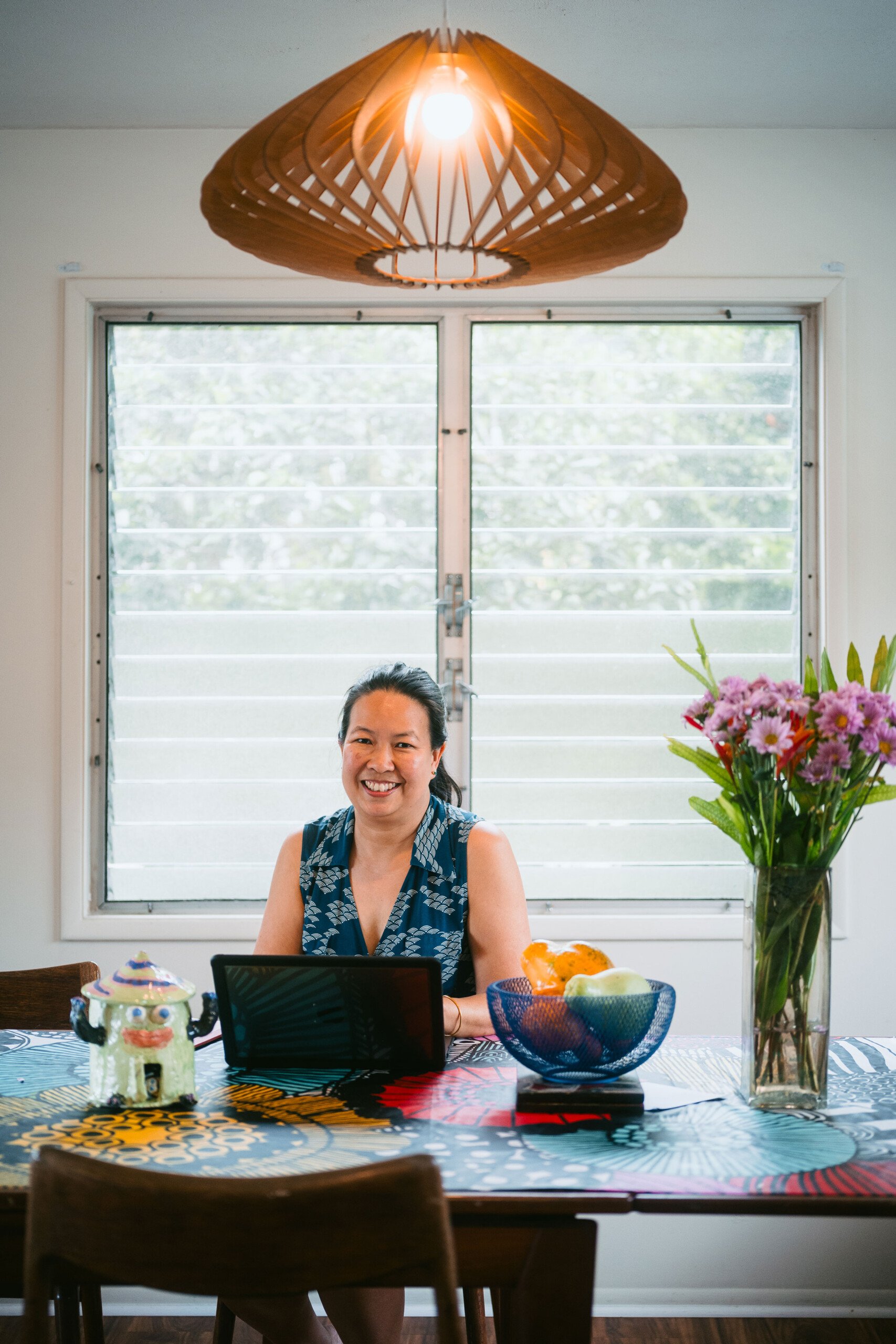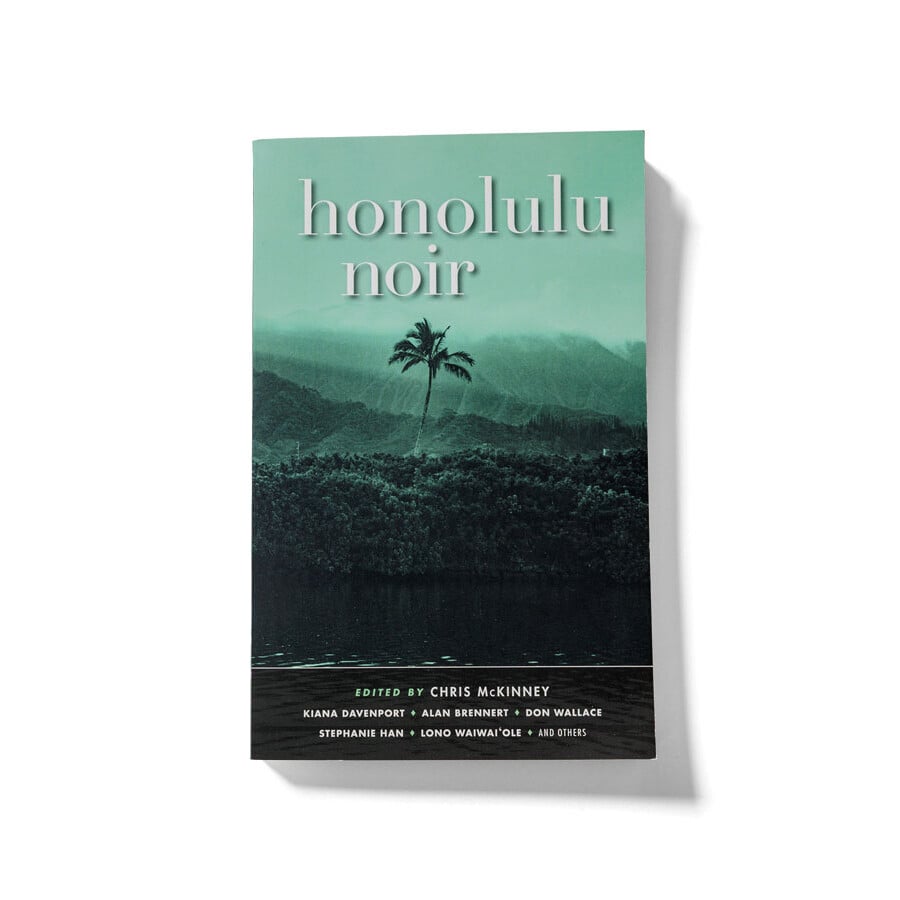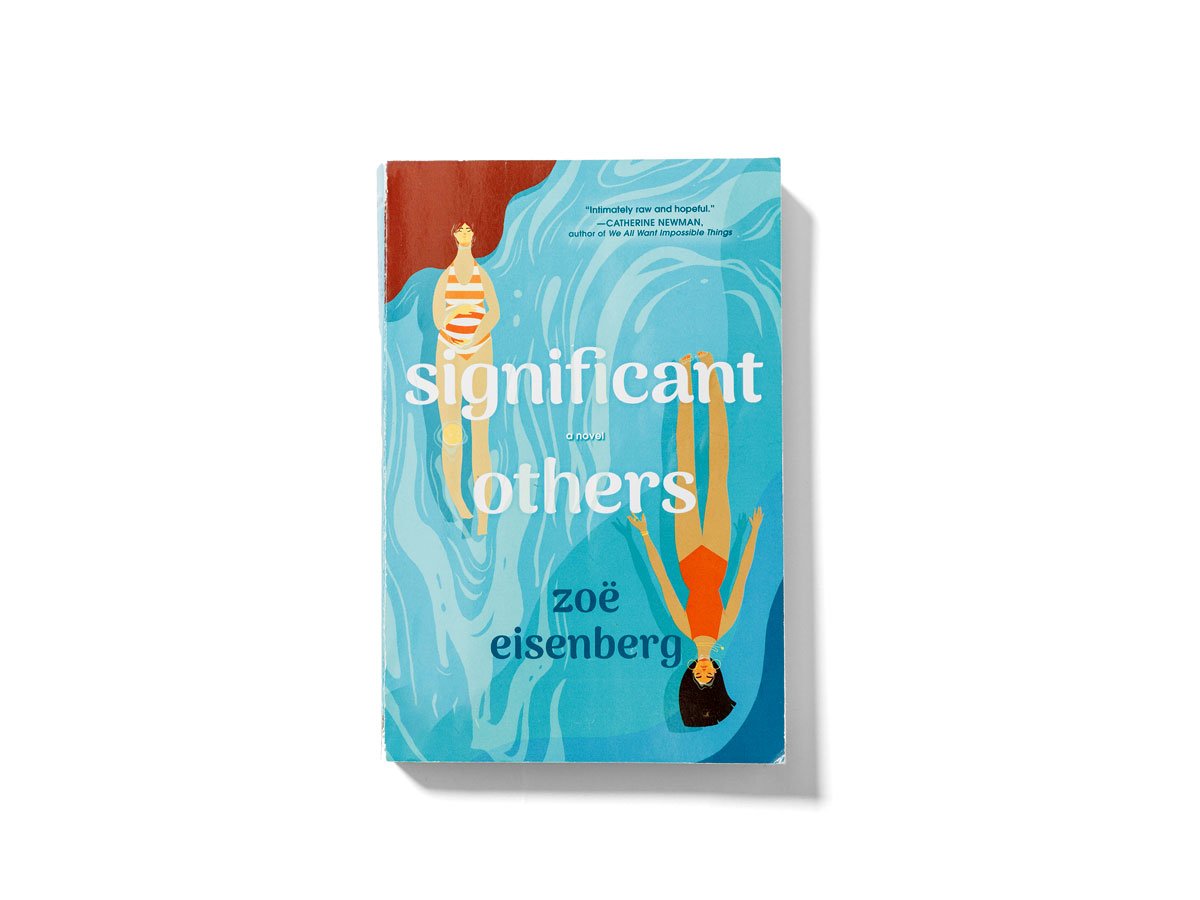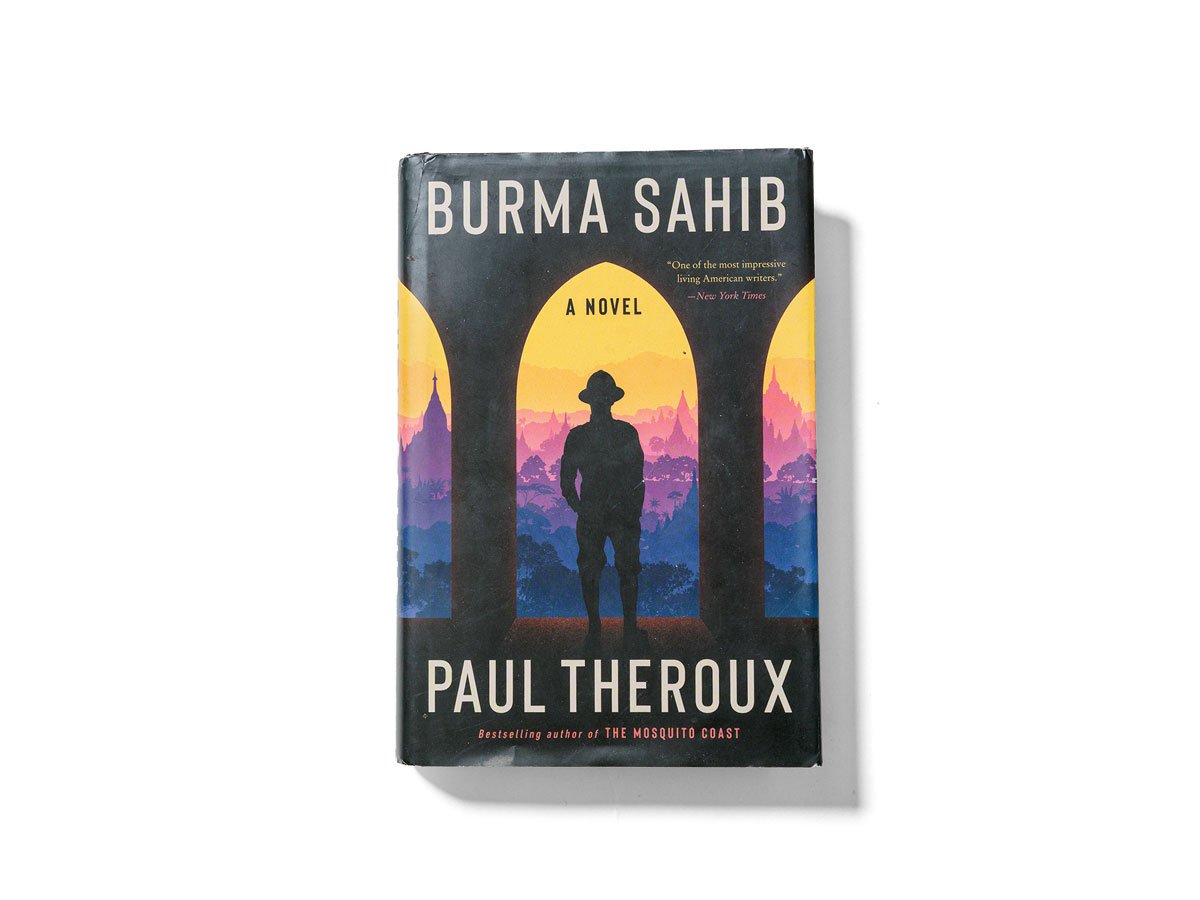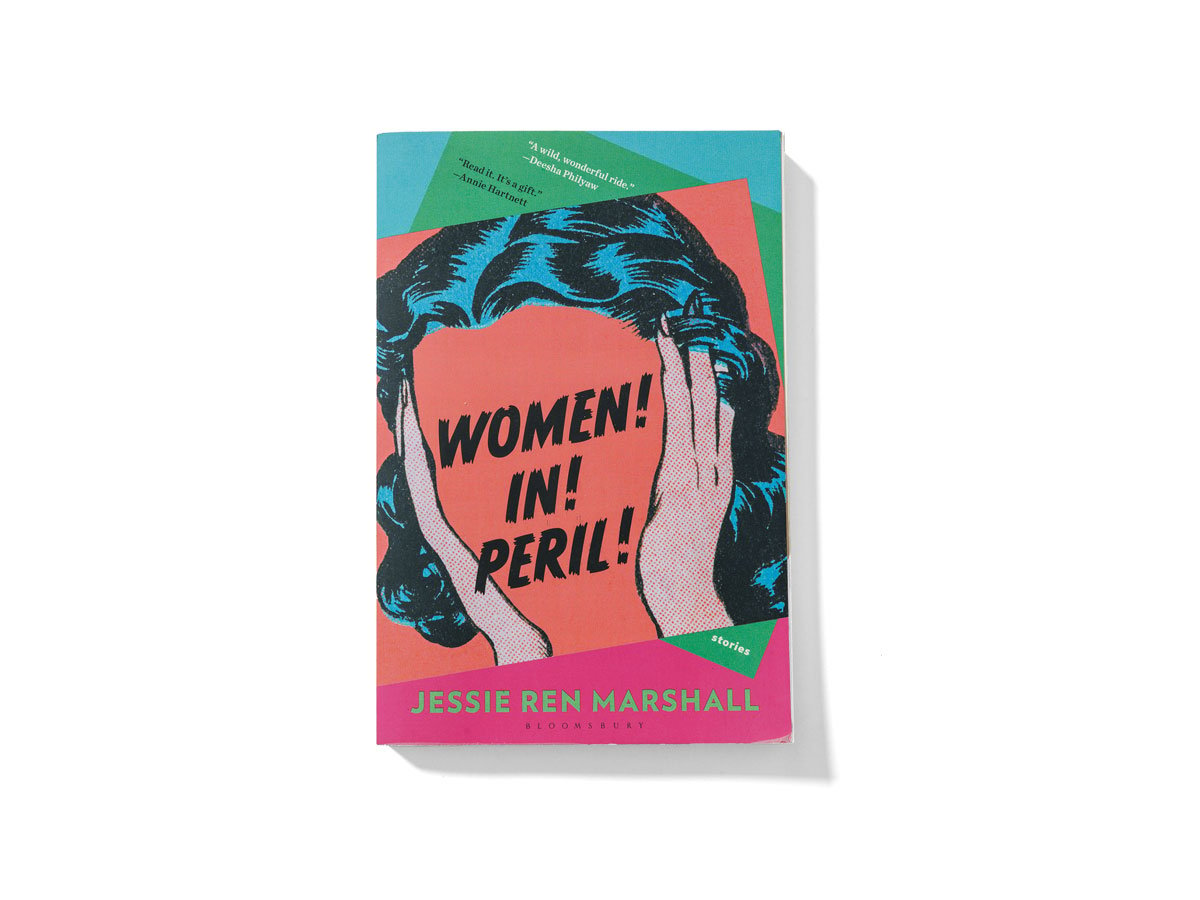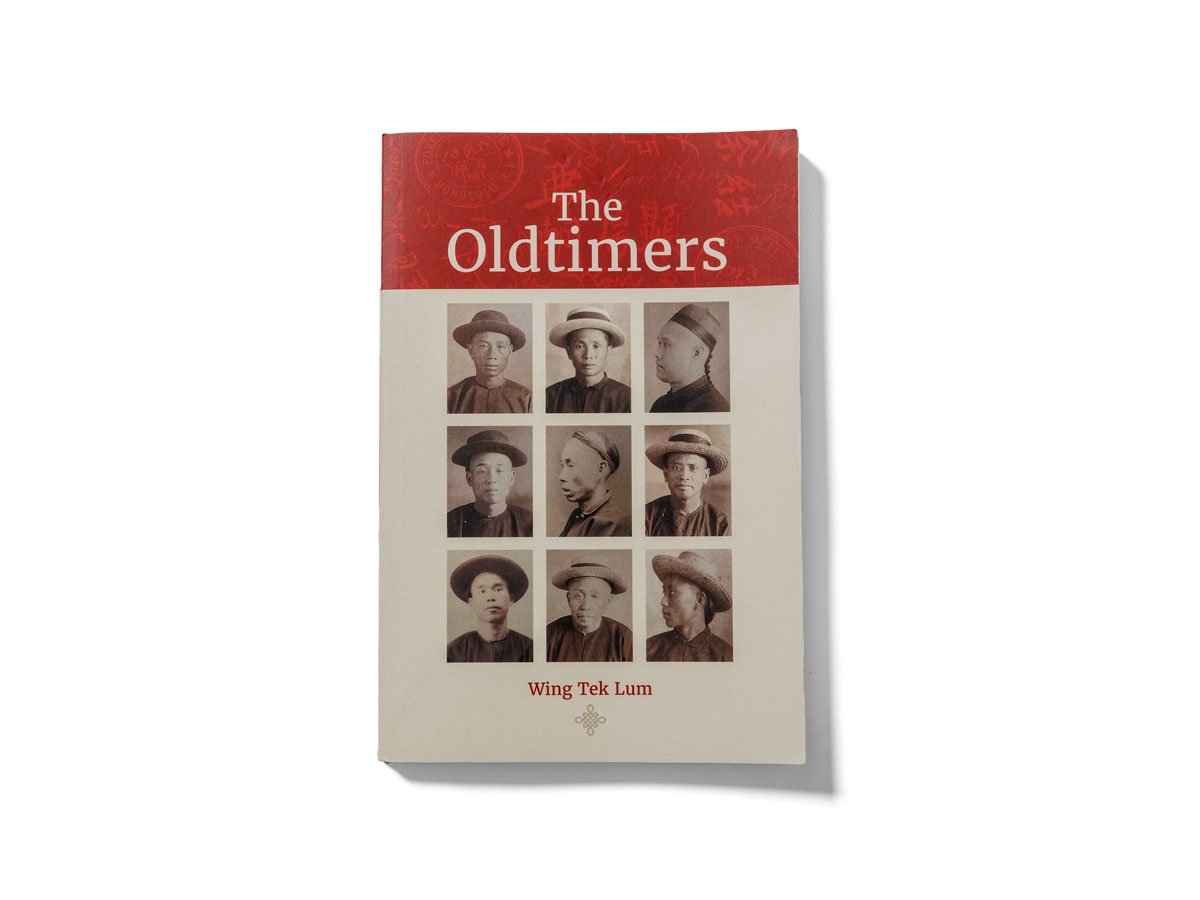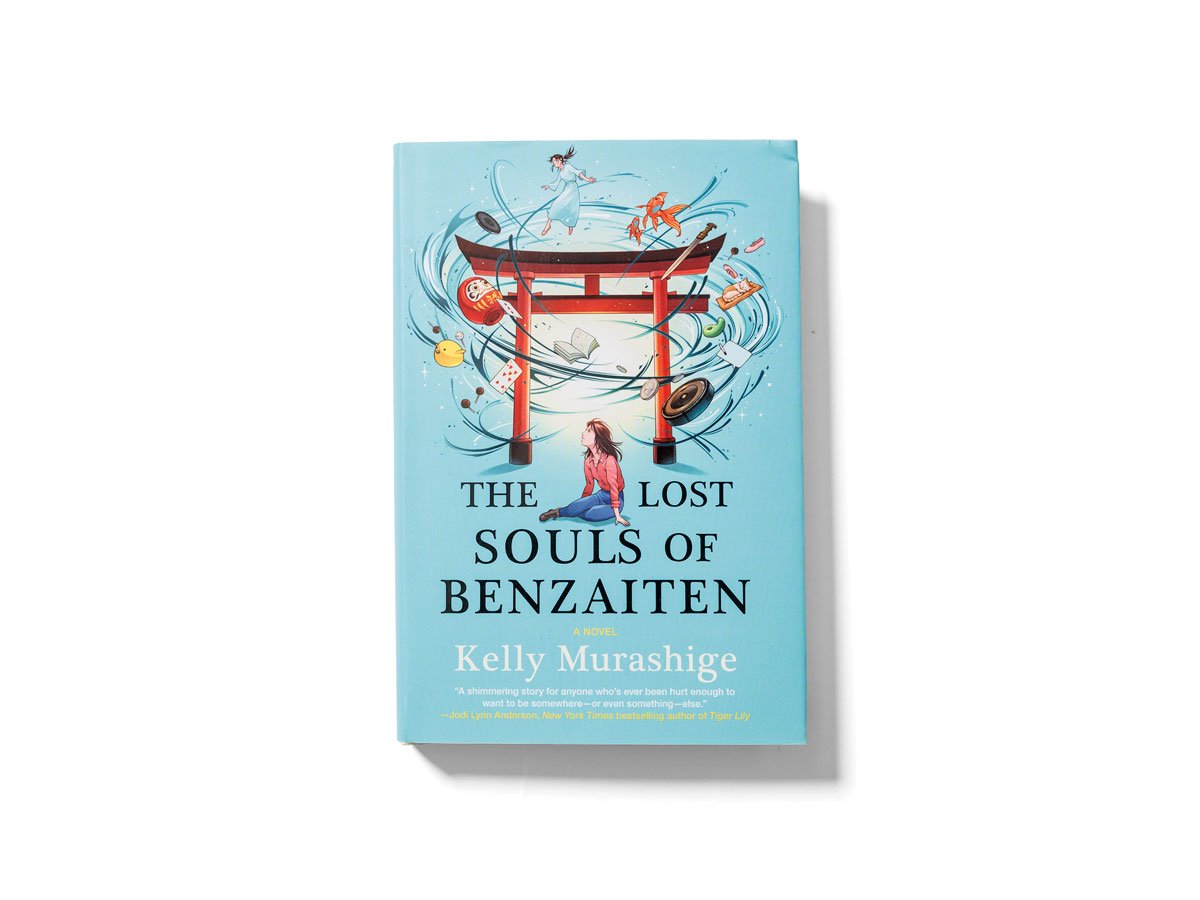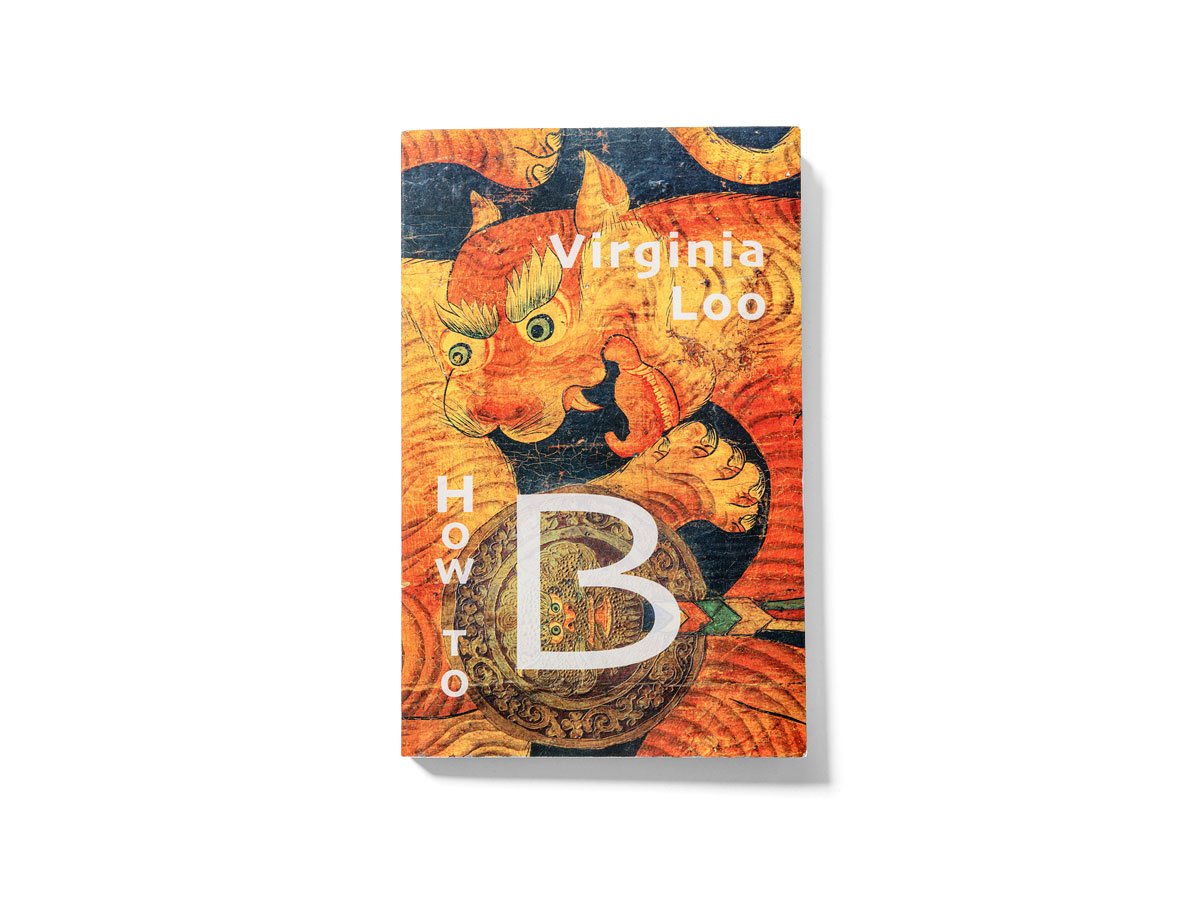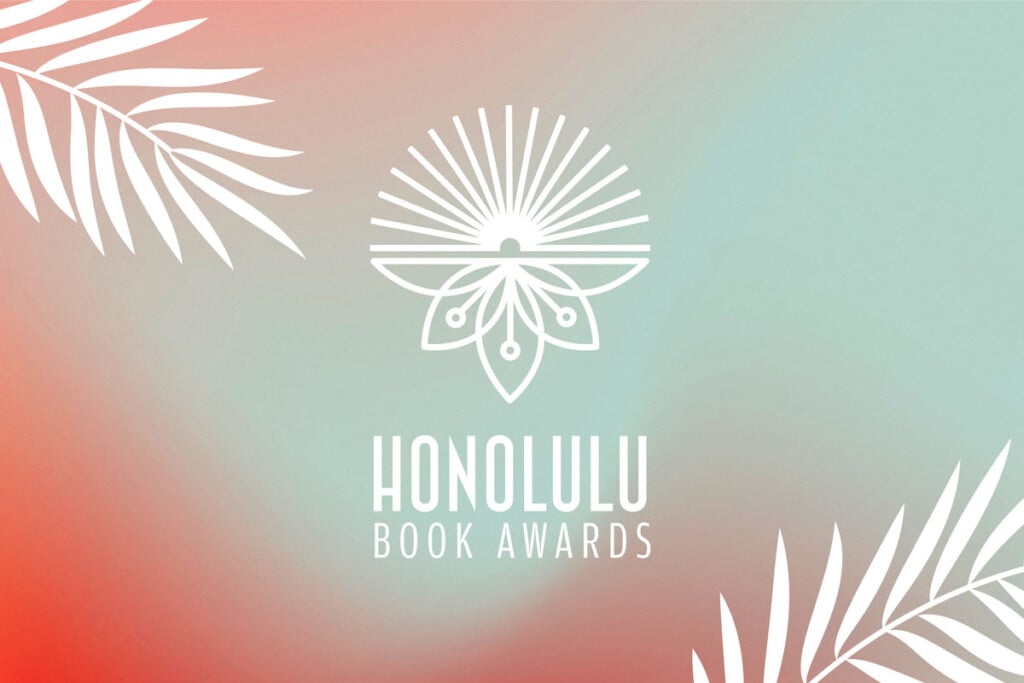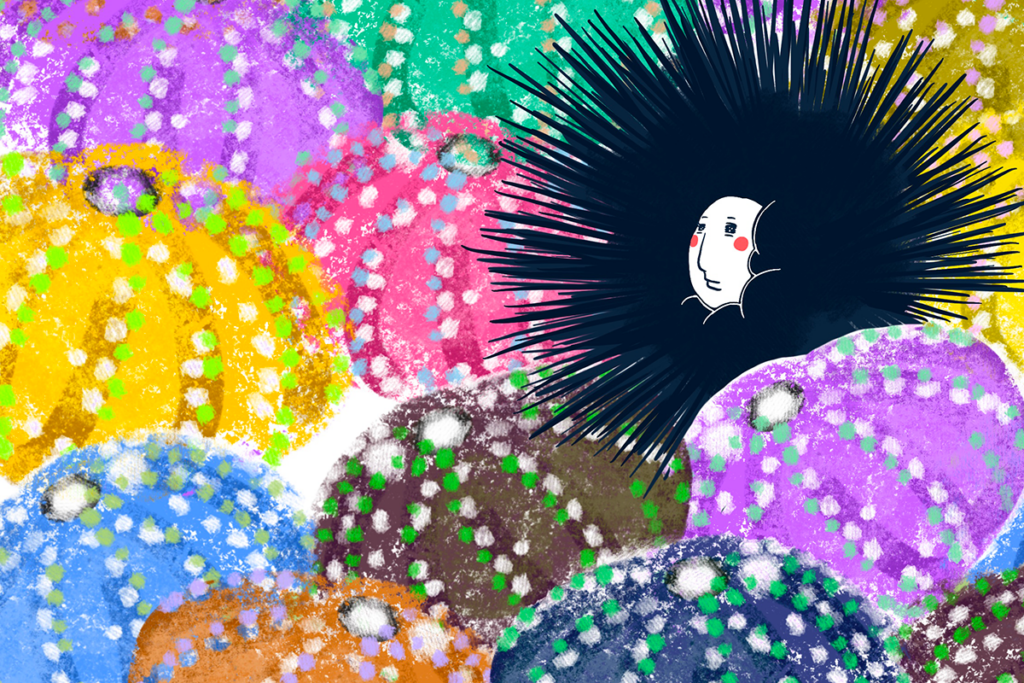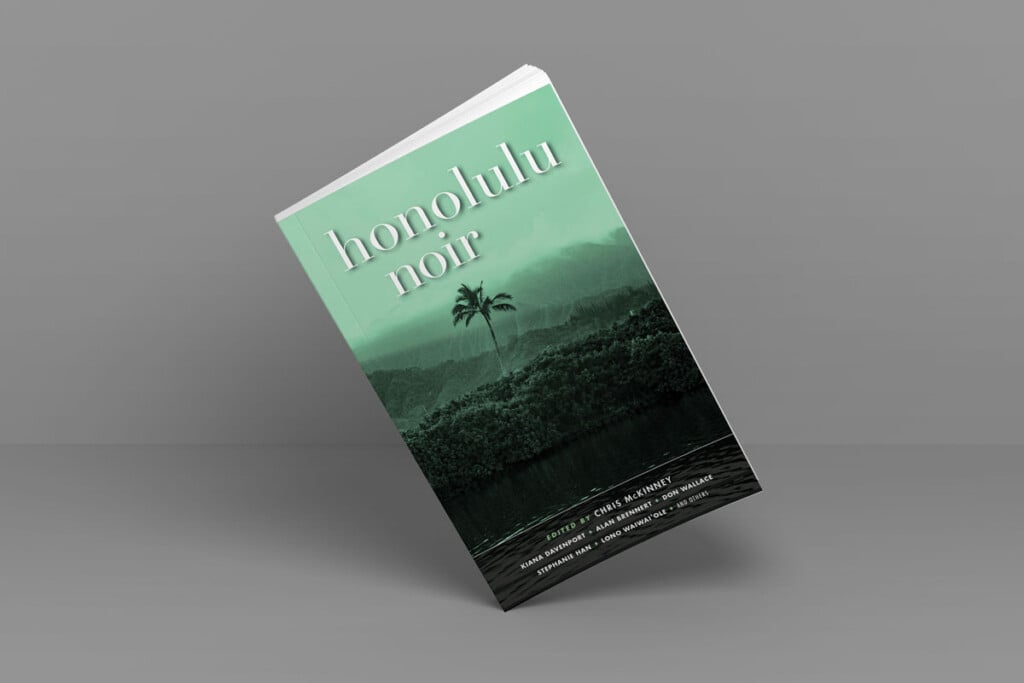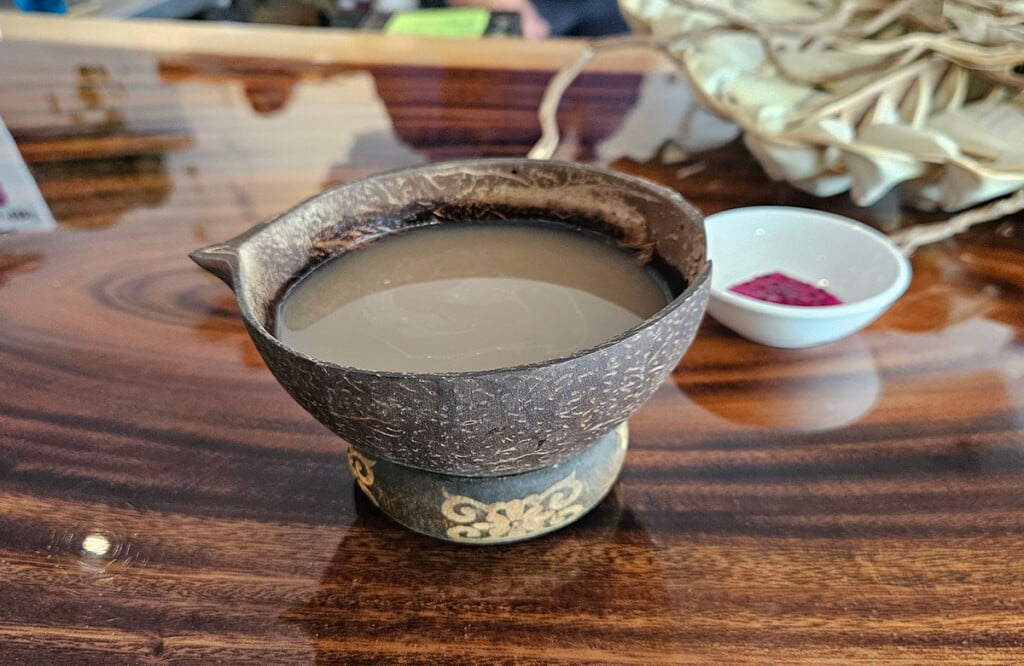2024 HONOLULU Book Awards
In selecting our 2024 winners in seven categories, we considered heart, breadth of audience, readability and connection.

The book gods were
kind this past year.
Once again, as with last year’s inaugural HONOLULU Book Awards, our local writers outdid themselves. As we stood in the powerful shore break of their words, we were swept away by so many good books about or from our world here in the Pacific.
What followed for me was two months of reading and another of interviewing and writing. And it was great. This was Hawai‘i at its newest and best.
What we discovered? Hilo. Three of our award-winning books gestated, one literally, in Hilo or in its backcountry. All three go against the grain, too, with Hawai‘i Island more typically associated with the sleepy pastoral or Maunakea or hula. There’s a global crackle to their authors’ prose and ambitions.
Of last year’s six awardees, four titles came from large New York or mainstream publishers, plus one from a top New York indie. (Until 2023, Hawai‘i had never had more than two titles come from the Bigs in any year, going back to 1888.) The output, and our awards, went noticed. In addition to bookstores displaying our story alongside local titles, HONOLULU got a shoutout in the holiest-of-literary-holies, The New York Times Book Review.
Of this year’s honorees, three are from major presses: Bloomsbury, HarperCollins/Mariner and Harper/MIRA. Two are from major indies—Soho Press and Brooklyn’s edgy Akashic Press—and two are from local standbys Bamboo Ridge Press and Saddle Road Press. The quality is once again very high, whether it’s a debut that sizzles or two career-crowning masterpieces.
It’s gratifying to get recognition from across the waters. But with the HONOLULU Book Awards, it isn’t just a numbers game, or a question of publishing house size or location. The questions we pose to ourselves are more about heart, breadth of audience, readability and connection. Is this us? Do we feel it? Did it stop time until we had to turn on the lights to keep reading? And maybe even skip the fourth quarter of the game?
For the 19 authors represented in these seven books, the answer is a resounding yes.
 Book of the Year (About Hawai‘i)
Book of the Year (About Hawai‘i)HONOLULU NOIR
Edited by Chris McKinney
Asked to assemble an anthology of darker themed stories, Chris McKinney was intrigued, but aside from local noir legends Scott Kikkawa and Lono Waiwaiole, “it’s not like there are two dozen talented wannabe Dennis Lehanes running around the island,” he says. And that’s a good thing: He says too many Lehanes—an author distinguished for his gritty crime stories and mysteries—would lead to “fedora fatigue.”
But instead of pulp crime scribblers, what if he tempted literary writers “who more or less represented the demographics of the city” into a trip to the dark side? Akashic Books publisher Johnny Temple liked the idea, but despite early yeses from two of Hawai‘i’s bestselling authors, Kiana Davenport and Alan Brennert, other rising stars rejected McKinney outright. Still, as the deadline loomed, he thought he had a good list, until several writers changed their minds.
Fortunately, McKinney’s wide net landed Stephanie Han, whose divorce thriller at Kaimana Beach opens the book. After hard-boiled tales of yakuza and double-crossing femme fatales by Waiwaiole, Davenport and McKinney himself, the “Home in the Islands” section features locals caught in locals-only nightmares: Mindy Eun Soo Pennybacker’s saga of a sovereignty con artist, a tale of a heist by private school students that I submitted, and Christy Passion’s story of an ER nurse trying to calm a suicidal terminal patient. In the “Cops” section, Kikkawa tours the 1950s mean streets, Brennert masterfully depicts Chang Apana (the model for Charlie Chan), and speculative novelist Tom Gammarino spins an AI whodunit.
The final trio of stories—including two by last-second Gen Z recruits B.A. Kobayashi and McKinney’s daughter, Morgan—scramble logic, point of view and reality itself. Conjuring a shambolic ghoul out of various deities, iconic Filipino author Michelle Cruz Skinner ends the volume with the spirit of noir itself, culling humanity as she moves indifferently through the centuries.
Reviewers were enchanted. The New York Times Book Review, New York Journal of Books, Kirkus, Booklist and Publisher’s Weekly praised Honolulu Noir’s revisionist take on our “paradise,” its diverse voices and genre-busting verve—validating McKinney, especially his enlistment of female writers. “The challenge was taking writers out of their comfort zones,” he says. In doing so, he took Hawai‘i literature with him.
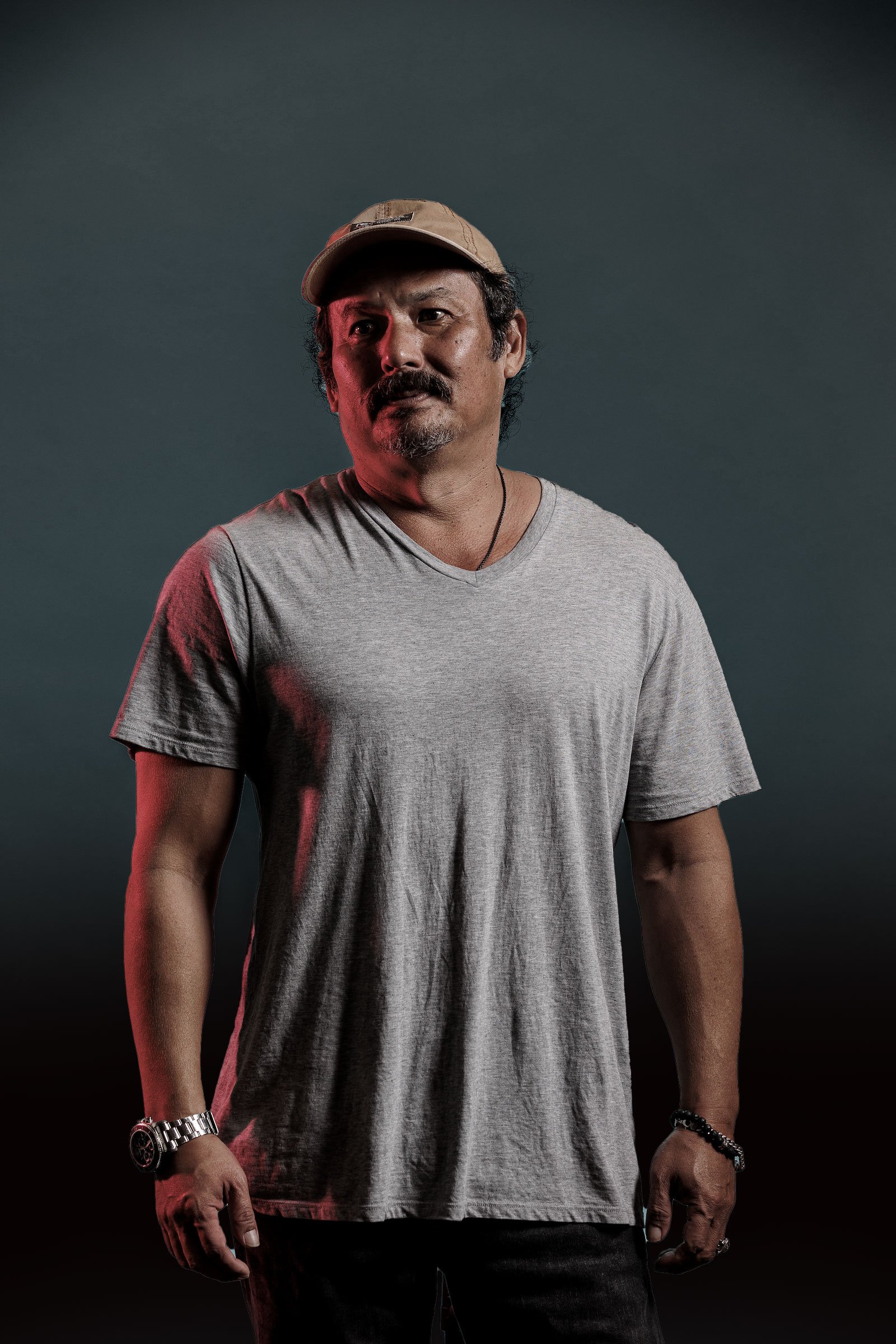
 Author of the Year
Author of the YearZOË EISENBERG
Significant Others
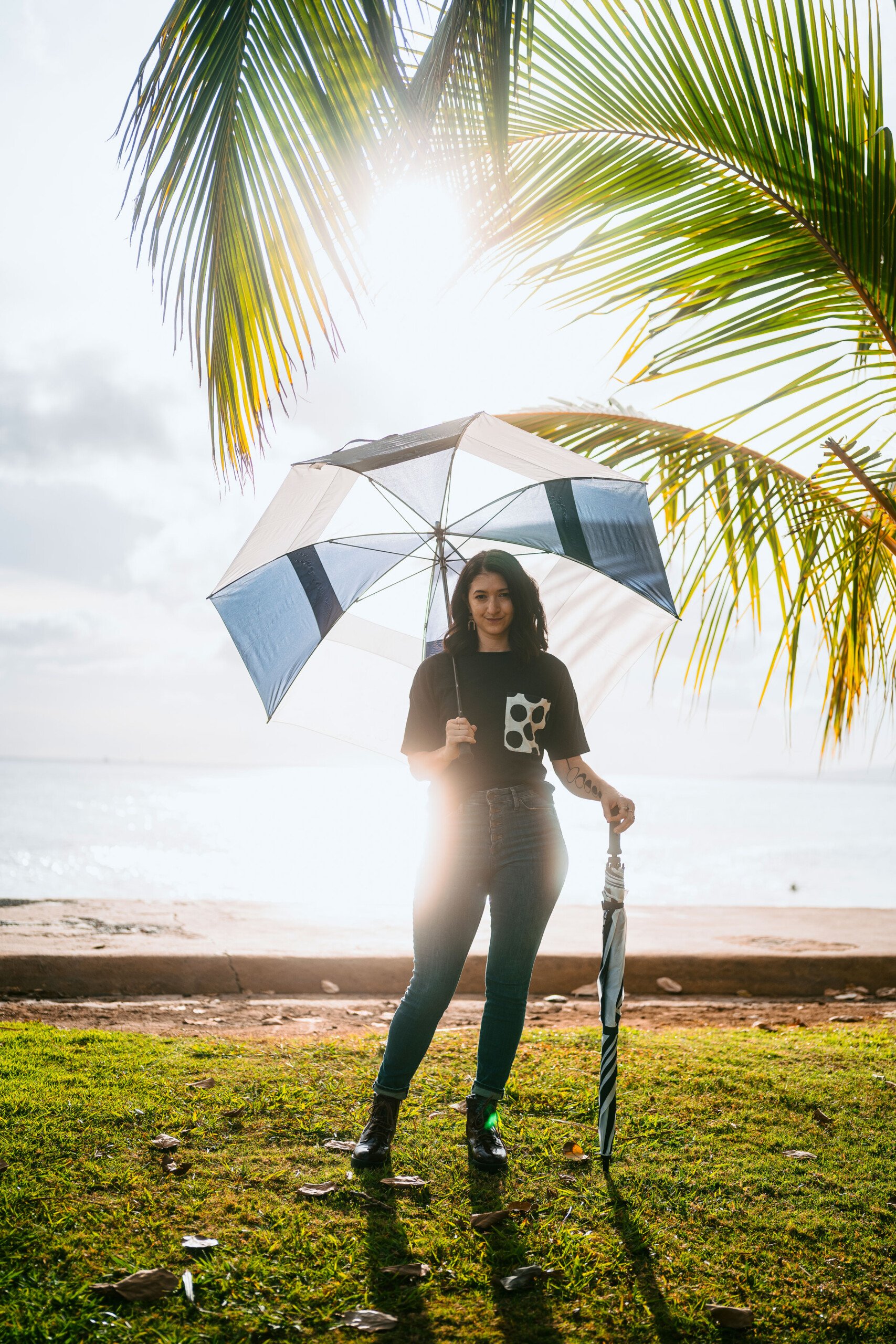
Not many first novelists have the chutzpah and chops to rewrite the rules, but Zoë Eisenberg does just that in her acclaimed novel, which she says “came to me as a breakup story about friends.” Free spirit waiter Ren and hyperefficient real estate agent Jess, former college roommates, share a house and a platonic bed in backwater Hilo. The shock that divides is Ren’s unplanned pregnancy, laying bare their unequal power relations when Jess embraces her inner Mommyboss.
We’re in rom-com territory, but not for long, as Eisenberg’s tart observations and elegant but unshowy turns of phrase peel back the layers of Ren and Jess’ relationship. We eagerly follow familiar twists and tropes—who’s the guy, will Ren fall for him, will he fall for Jess?—while Eisenberg’s long game keeps us guessing, usually wrong.
“Ultimately what I’m trying to say about friendship is it’s just as beautiful and nuanced as any relationship,” she says, “and if you don’t give it that amount of care, it will die.”
Slant/off-center relationships are a subject that Eisenberg, a Puna-based millennial, brings to life in fiction, film and dance, with equal aplomb and no shyness when it comes to sex: “I think we need to be writing about sex always, but the question of course is who and how,” she says. True to form, last year she directed an indie feature about a woman who decides to pose as a high school student after a teenage boy mistakes her for a peer, with shattering results. Chaperone took the Slamdance Festival’s Grand Jury Award for Breakouts.
Eisenberg co-founded and is creative director of Aerial Arts Hawai‘i, a Hilo burlesque/circus studio, and also co-founded and ran the Made in Hawai‘i Film Festival from 2018 to 2022. Living an overscheduled life, she says, “is a way to offset my hermit recluse writer tendencies.” In what feels like a signature move—bringing local writing, film and Hawai‘i creatives together—she’s currently working on a feature production of a Kristiana Kahakauwila short story about cockfighting on O‘ahu.
We can’t wait.
 Book of the Year
(Not About Hawai‘i)
Book of the Year
(Not About Hawai‘i)Burma Sahib
By Paul Theroux
Paul Theroux hadn’t planned to write a historical novel, but after reading a recent biography of George Orwell, he says he was “struck by how little there was about his time in Burma.” Theroux had read everything he wrote. “If you do that with an author—read everything—you know the person well,” he says. Now, he noticed the gaping hole about the future 1984 author’s life “when he was a policeman called Eric Blair, 18 years old, just out of Eton.”
Without telling his agent or publisher, Theroux began writing, for eight months wondering, “Is this anything?” After a “yes” from his publisher, he spent 18 more months writing, while re-reading Orwell, his letters and biographies. The result, Burma Sahib, was the most positively reviewed book by a Hawai‘i author in 2024. John Irving called it “the book of the 21st century” in The New York Times.
Readers can enjoy this as a brilliantly paced, highly sexed shocker, gorgeous with luminous linguistic cinematography. Burma and Blair come alive thanks to Theroux’s unobtrusive weaving of Blair’s own words and those of his contemporaries, including from Burmese sources. Lastly, Theroux says, “I had the great advantage of having traveled in Burma on four occasions, the first in 1970, when Burma, and Rangoon in particular, still had a colonial air and its architecture intact,” though seedier than before.
More than high entertainment, the book strips away the “dainty” (Blair’s word) nostalgia about British colonialism.
Theroux links imperial sadism, incarceration and sex to show how colonialism “alters the colonial administrators themselves, that is, makes them coarser and unjust.” And the birth of Orwell as Blair’s conscience is Burma Sahib’s subject. But, Theroux warns: “People think of him as St. George, and he was far from that. He held at times racist views, he was violent and contradictory at times, he felt he needed to atone—and that produced many of his eccentricities. He was a brilliant writer and like many of us flawed, but he is the more human for that. You have to remember how young he was—a teenager.”
Today, Theroux says, with Donald Trump “talking of making Canada the 51st state, and acquiring Panama and Greenland, you have a clear indication of colonial megalomania.” Burma Sahib couldn’t be more prescient.
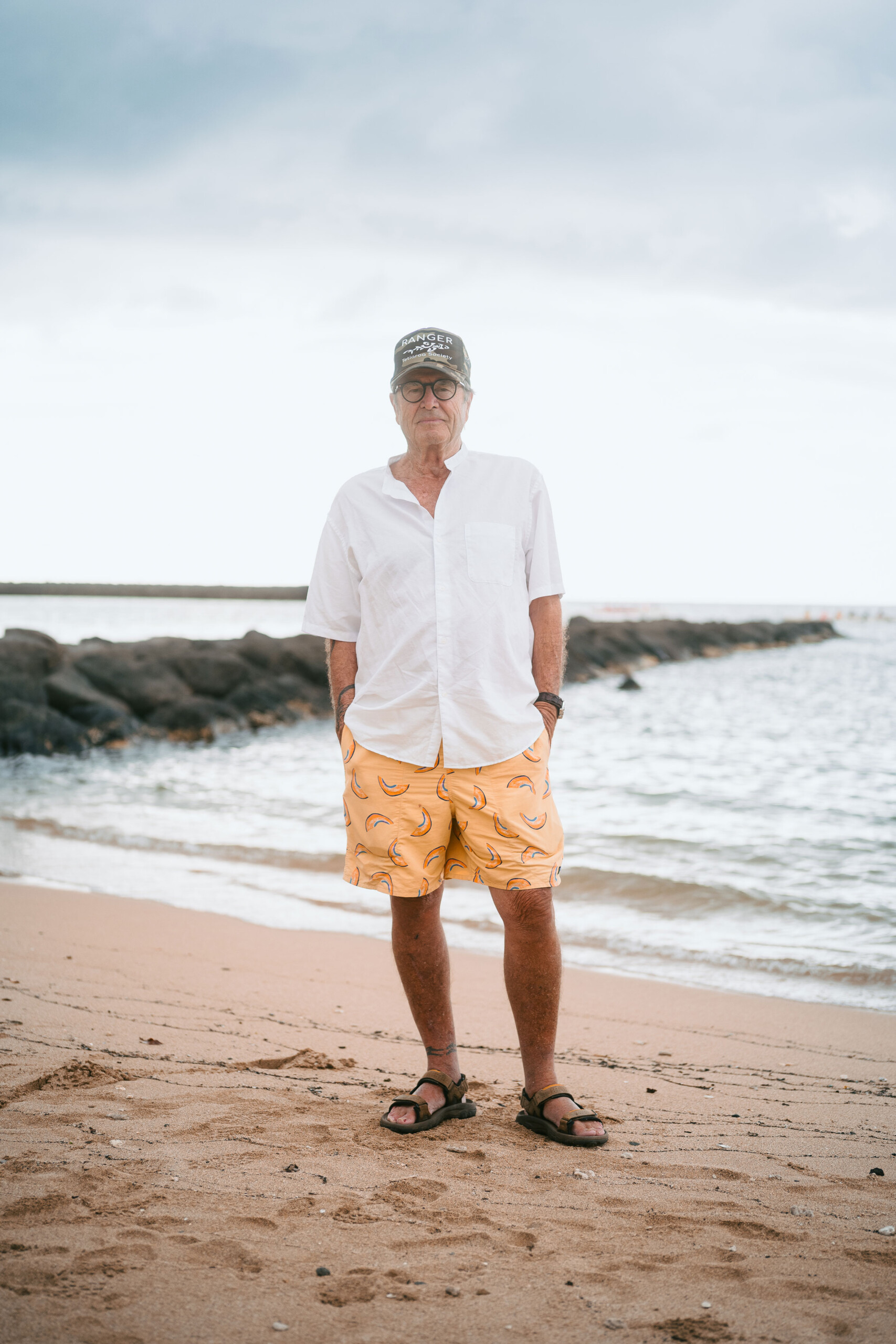
 Best Debut Author
Best Debut AuthorJESSE REN MARSHALL
WOMEN! IN! PERIL!
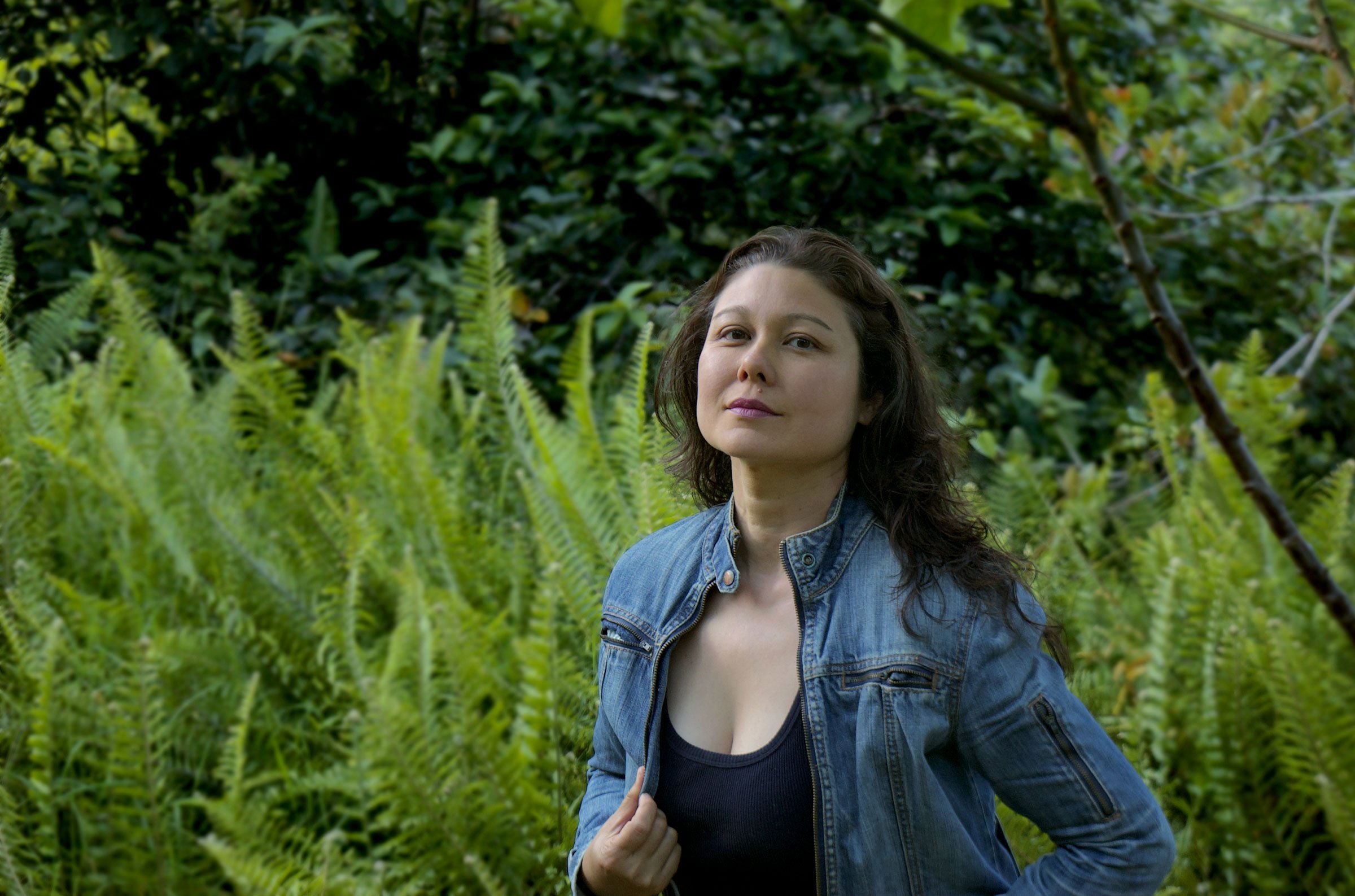
“I’m a very postmodern girl,” says Jessie Ren Marshall, after detailing her off-the-grid life deep in a Hawai‘i Island valley in a house she built with her partner, Kimo, “who is out there in the fields tilling the earth with his hands to raise food for us.”
Exuberant contradiction marks Marshall’s neck-snapper of a story collection as it zigzags from The Internet of Things and interplanetary colonization to stripping for Russians in London to sharing child-rearing duties in a small town with your once-lesbian ex who’s married a (nice) man. We close the book exhilarated by its audacity and moved by its humanity.
Half-Japanese via an island mother marooned by marriage in rural Pennsylvania, Marshall calls herself “a drama dork,” and “an outsider even in theater.” She escaped to Oberlin and the avant-garde as a writer, director and producer “making things that were not necessarily script-based,” as she puts it.
In New York City, exposure to such artistic rule breakers as playwright Robert Wilson and dancers and choreographers Merce Cunningham and Pina Bausch didn’t sit easily with her MFA program at NYU. “Everybody was in kind of a lit bubble there,” she says. “Everybody reading the same book, the same articles, in the same magazines. There was this climber mentality. I feel Wall Street influenced it somehow—people always scheming. How can I get ahead? How can I make the connections I need? That’s not the kind of storytelling I wanted to do.”
She ditched New York for another “York,” the university in the U.K. “Afterwards, I considered California,” she says, “but fell in love with a man from Hawai‘i who wanted to move back here, so we did a test thing. A new relationship, you’re my person, let’s try moving to Hawai‘i together. And we did, and we’ve been together for 16 years.”
Marshall is now polishing her novel Alohaland. Like her collection, it will be published by Bloomsbury. “I have my dogs, my trees, the land I walk every day, the fog. The weather is my friend. I even wrote a musical: Pele & the Hiʻiakas, which has a song called ‘Weather Is My Only Friend,’” a mic drop that only whets our appetite for more.
 Best Book of Poetry
Best Book of PoetryThe Oldtimers
By Wing Tek Lum

Wing Tek Lum tells the story of the pioneer Chinese in Hawai‘i in brief poems that function as chapters and, in many cases, as epitaphs for individuals who’d otherwise be lost in history. Begun in the 1990s, laid down, then resumed in 2015, the book exudes the confidence of a writer who has reached peak mastery by taking on the grandest, most challenging project of his life—and has seen it through to perfection.
Part One delves into the plight of those who immigrate to Hawai‘i, and those they leave behind. Both are losers in the deal, as these poem titles hint: “An Ocean and a Lifetime Away,” “In Exile,” “The Letter,” “The Spinsters.” Work dominates Part Two: “Sugar Cane Lament,” “Poi Factory,” “In the Store,” “The Houseboy” and so on.
We taste the bitterness of lives of drudgery that end without success or even variation. Because Lum has consulted numerous texts, archives and government reports, these spare chronicles are nonetheless packed with details of work, scents, foods, the sweat and, yes, joy in the landscape, the bird life, the grace of Hawaiians. And love. Lum weaves ‘Ōlelo proverbs collected by Native Hawaiian scholar Mary Kawena Pukui into his sex scenes, enriching them with hidden meaning.
Part Three, about Honolulu’s devastating Chinatown fire of 1900, is “the fulcrum,” Lum says. We experience the disaster from the inside, ignited by ignorance and racism. Afterward, newly homeless Chinese are herded into tent camps, stripped of their clothing, doused in pesticide and released to start over with nothing.
Parts Four and Five chronicle post-fire lives, especially the diversions, which include opium and brothels. Lum steps into the lives of prostitutes to record this inevitable outcome of a remittance society. But we do catch glimpses, in poems of unearthly beauty, of the few who break away and move deep into the valleys, where they marry Island women.
Part Six is a requiem. Because of China’s emphasis on ancestor worship, “these men’s stories were forgotten,” Lum says. “In retrospect that was what I was trying to do in this book, poem by poem—to give voice to all those Chinese” who died leaving hardly a trace. With The Oldtimers, they’re back in the books.
 Author Under 35
Author Under 35KELLY MURASHIGE
The Lost Souls of Benzaiten
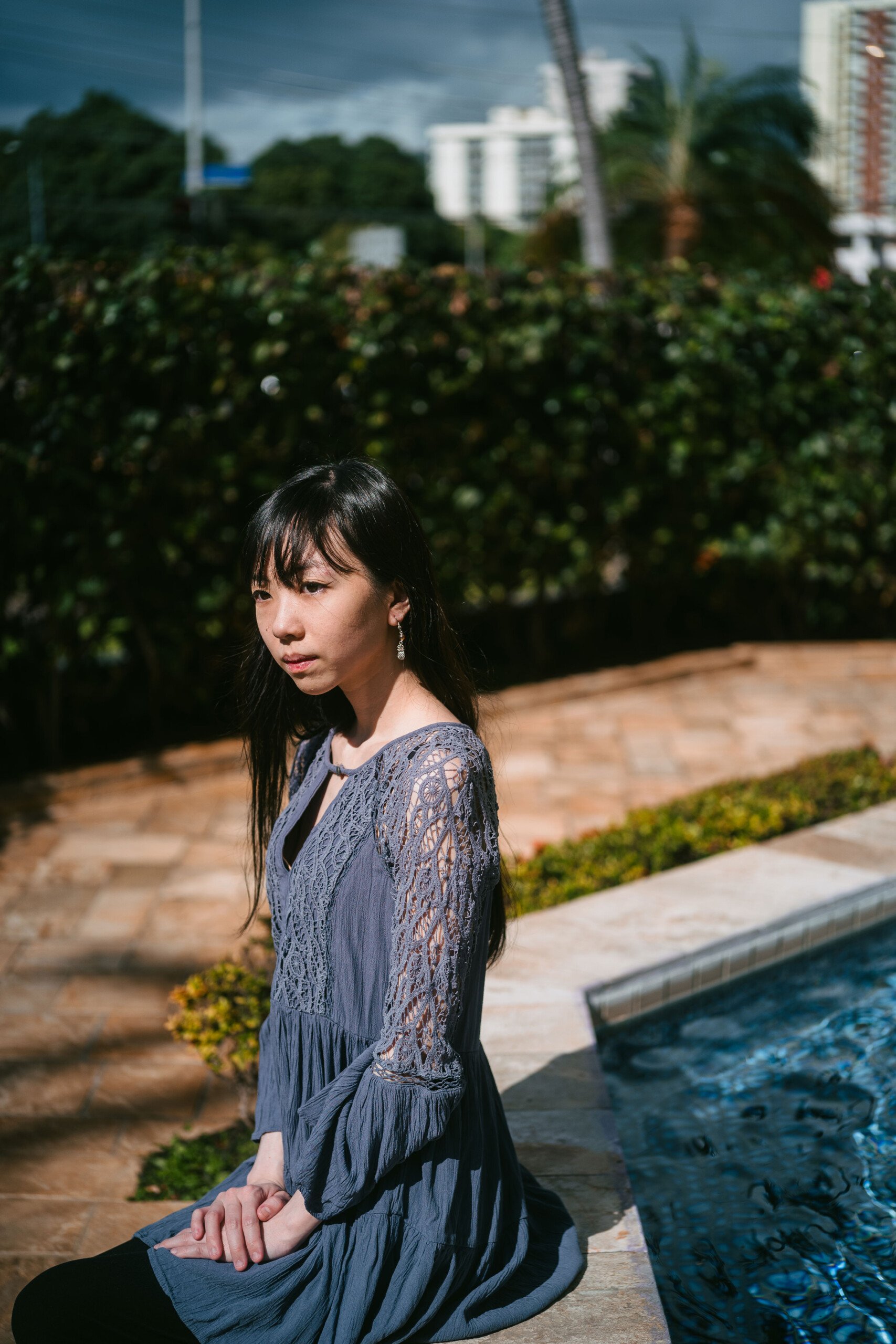
After a brutal betrayal by her best girlfriends, shy teenager Machi goes silent, but on the page, she’s a wicked storyteller. More than just a rant on mean girls, The Lost Souls of Benzaiten addresses depression—the auditioning of therapists until you find the right one, the acceptance of irrevocable loss, and Benzaiten. The Japanese Buddhist goddess, who Murashige daringly plops down into Machi’s life, is all-wise-and-knowing until her own gaping sense of loss kicks in. Now it’s Machi who rallies her out of a harmful obsession with a newly dead baby whom she’s supposed to help transition.
Getting to know grief instills purpose to Machi’s life, leading to a witty, dizzying yet grounded work that mostly evades young adult tropes. This may be due to Murashige having a front-row seat to teenage life: “I had these very cool, older female cousins who were everything I wasn’t: homecoming queens, athletes, beautiful. They would give me a lot of hand-me-down clothes, they would give me purses, and they would give me books”—as did her mother and grandmother.
Private school was fertile ground for fiction. “I understand Punahou can have a stuck-up vibe around it,” Murashige says. “There were a lot of people who were total stars, and I was the quiet girl who sat and read. But there was a lot of space for me, too. I worked with the student lit and arts magazine. I started thinking this is what I liked. Something about the adolescent experience, about finding yourself, friendships, family issues, falling in love and being too awkward to fall in love. And it gave me an awareness of privilege. I’m the first person in my family to go to that kind of school. My mom grew up very poor.”
Although buoyed by good reviews, and with a second novel coming out this July, also from Soho Teen, the 27-year-old kept her day job. She works remotely, of course, as a health care analyst from an apartment near the Ala Wai Canal, where she lives with her parents.
“I clock in, I clock out,” she says, laughing. “I have a good work-life balance—reading and writing, forever in my hidey-hole.”
 Nonfiction Book of the Year
Nonfiction Book of the YearHOW TO B
By Virginia Loo
It sounds like a high-concept rom-com. Globe-trotting epidemiologist Virginia Loo, holed up in a fortress in Pakistan that she learns is a terrorist death trap, vows to buy a place of her own when she returns home to Hawai‘i. Settling in Hilo, she relishes the peace and quiet. But its dating scene is quiet, too. And Loo has spent the best years of her reproductive life as an overseas consultant, often in high-risk places such as Islamabad and Kabul.
One night, back on assignment, this time in Rangoon, she turns to a gay male colleague and blurts: “I want a baby.” The eminently self-reliant Loo then embarks on a DIY pregnancy program. While simultaneously looking for a donor and researching the science and logistics, she’s mindful of her reticent Chinese parents. Wary of small-town Hilo gossip, she finds conception a challenge.
The comedy stakes ramp up as she tries to inconspicuously traffic in express mail sperm packets, even while traveling for work.
But for every misadventure there’s a growing worry about her failures. Even after she finally gets pregnant, she’s forced to confront her lack of social connection outside of her close-knit international colleagues. In Hilo, she has no one to take childbirth classes with, no one she feels comfortable asking to drive her home from the hospital, no one to sew a Hawaiian quilt for her. And so her story becomes one of lowering her defenses, forging new bonds, bringing her parents into the loop and living a real life.
Loo is a proud product of Punahou teachers Joe Tsujimoto and Norman Hindley, and the Kaimukī Writers Group, and her book is the work of longtime Hawai‘i Island press Saddle Road Press (which recently moved to New York). Fun and fast-paced, but also sneakily moving and, given our current threat to reproductive rights, even profound, How to B is a gem.
